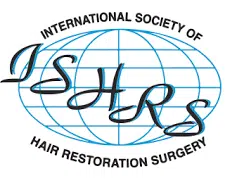Scalp Infections: Types, Symptoms, and Treatments in 2024
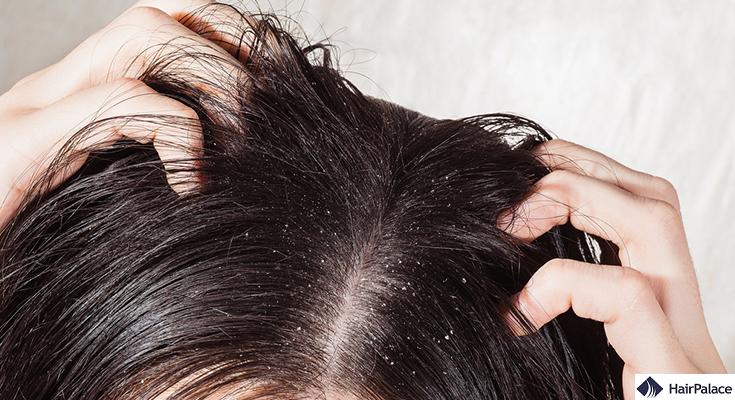
Scalp infections can be painful, frustrating, and embarrassing. And if left unchecked, they can cause significant, sometimes permanent, hair loss.
For that reason alone, it’s worth your time finding out more about these conditions, as acting early can prevent hair loss from taking hold. But how do you know what exactly to look for?
Luckily, we’re here to help.
This article will explore different scalp infections that can cause hair loss. We’ll explain the different symptoms you should be mindful of and also highlight simple, effective ways to prevent future infections from taking hold.

Scalp infections and hair loss: Fast facts
| Folliculitis | A bacterial infection that can cause permanent damage to hair follicles, preventing them from growing more hair post-recovery. |
| Ringworm | Weakens hair strands, causing them to break off easily and cause bald patches called tinea capitis. |
| Piedra | Creates hard nodules throughout your hair, weakening the hair and leading to hair falling out |
| Impetigo | A highly contagious infection that affects not only hair on your scalp but also other body parts. |
| Seborrheic dermatitis | Inhibits hair growth, sending them into an early resting phase which, in turn, results in loss of hair. |
| Scalp psoriasis | Can cause the skin to become incredibly flaky. Scar tissue may develop, which can result in permanent hair damage. |
| Scalp yeast infections | Form crusty, itchy red patches across the skin, including your scalp. This itchiness can cause you to scratch and damage your hair. |
| Lichen planus | Causes red and purple bumps on the skin, leading to discoloration, irritation, and hair thinning. |
| Scleroderma | Tightens skin, drying it out and making it incredibly itchy. This can lead to significant hair loss. |
What is a scalp infection? – The 9 most common
When bacteria or fungus enters the scalp through damaged skin (a cut, eczema, etc.) or the hair follicles, they may cause an infection.
The following scalp infections are known to cause hair loss:
1. Folliculitis
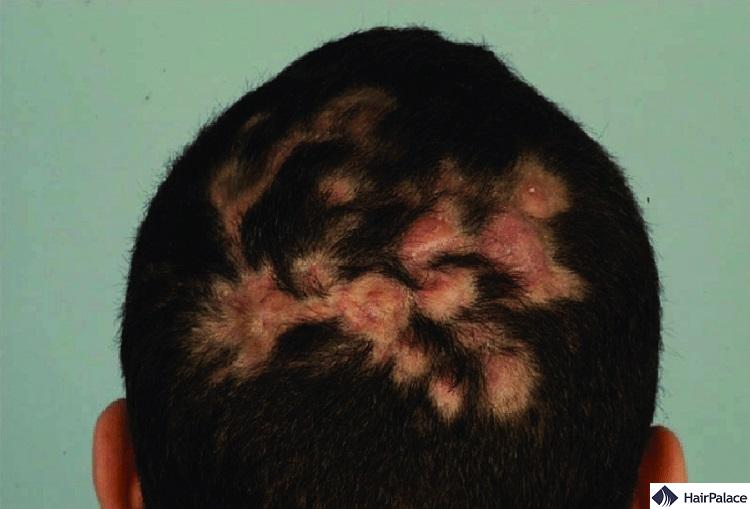
One of the most common scalp infections worldwide is folliculitis. This is when hair follicles become inflamed, itchy, and painful, and hair strands fall out earlier than expected.
The condition looks similar to acne, where a small red ring surrounds follicles. Two leading causes of the illness include fungi or staph bacteria, though wearing tight-fitting hats, touching your scalp regularly, having damp skin over prolonged periods, and shaving/plucking hair can also contribute to its development.
Treatment & prevention
While your condition can clear up in time without intervention, you may want to seek help if your folliculitis is severe.
Applying a warm cloth to your scalp and keeping your hair clean and dirt-free can help alleviate symptoms and help prevent further microbial activity.
Determining the root cause is the first step to preventing future infections. If the cause is bacterial, using common antibiotics like neomycin and bacitracin can bolster your defenses against future outbreaks.
In the case of fungi, taking oral antifungal medication can be effective. Regardless of the cause, you should avoid wearing tight headgear and touching, plucking, or shaving your hair while symptoms persist.
2. Fungal infection on scalp (Ringworm)
Although it affects children more, ringworm is a fungal skin infection that can be easily transmitted to anyone by touching contaminated surfaces, soil, animals, or skin-to-skin contact with an infected person.
It can appear anywhere on your body, including your scalp, making it feel incredibly tender and causing hair to weaken and break more easily.
Ringworm on the scalp can cause bald patches, known as tinea capitis, to develop. The condition also causes inflammation, causing your scalp to become itchy, blistered, and tender.
Treatment & prevention
Because it is a fungal infection, your doctor may prescribe oral antifungal medication to treat your condition. Follow their advice and avoid touching the affected area, which may spread the disease further.
Treat ringworm by washing your hands thoroughly after petting animals. This also includes touching any surfaces animals have been near, including gates, walls, and countertops.
Additionally, if someone in your family has ringworm, avoid sharing personal items like towels, bedsheets, and clothing.
3. Piedra
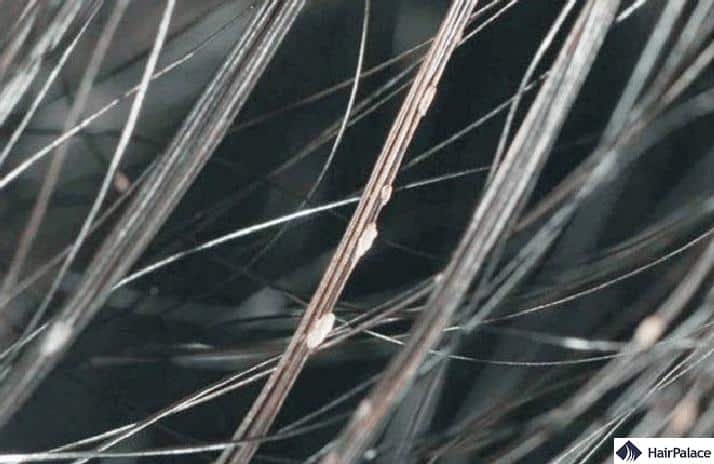
Named after the Spanish word for ‘stone,’ Piedra scalp disease is a fungal infection that forms small, hard nodules along the hair shaft.
This results in weakened hair that is brittle and falls out prematurely. White Piedra scalp infection can affect various body parts, including the scalp, facial hair, armpits, and genital areas.
White Piedra scalp treatment & prevention
The most common and effective treatment of piedra is cutting or shaving the affected hair. However, this may not be ideal for many patients.
Some oral antifungal medications like terbinafine or ketoconazole show promising results for treating the infection. Practicing good personal hygiene can be an effective way to prevent future piedra infections.
4. Impetigo
Impetigo is a highly contagious skin infection commonly found in children, though adults can still contract it. Two different bacteria can cause it; staphylococcus aureus and streptococcus.
Though usually harmless, staphylococcus aureus can cause impetigo if it enters a damaged hair follicle.
On the other hand, streptococcus, also known as strep, is highly contagious and spread by direct skin contact with an infected person or surface and through coughing and sneezing.
Impetigo starts with red sores and blisters, which get bigger, itchier, and eventually burst. Skin is left with crusty, golden-brown patches afterward.
Although impetigo is usually found on the face because it is highly infectious, patients can unknowingly transfer the infection to their scalp, where blisters can inflame and irritate the scalp.
Treatment & prevention
Antibiotic creams not only help treat the uncomfortable symptoms of impetigo but can also stop you from being contagious to other people.
An effective treatment prescribed by your doctor should clear up the condition within a week. That said, severe cases may require antibiotic injections.
The best prevention against impetigo is practicing good personal hygiene. If someone in your home has the infection, cover up blisters with bandages.
Avoid contact with other people, regularly wipe down surfaces, and do not share personal items like towels, sheets, and more. Avoid touching other body parts, as this may transfer the infection.
5. Seborrheic dermatitis
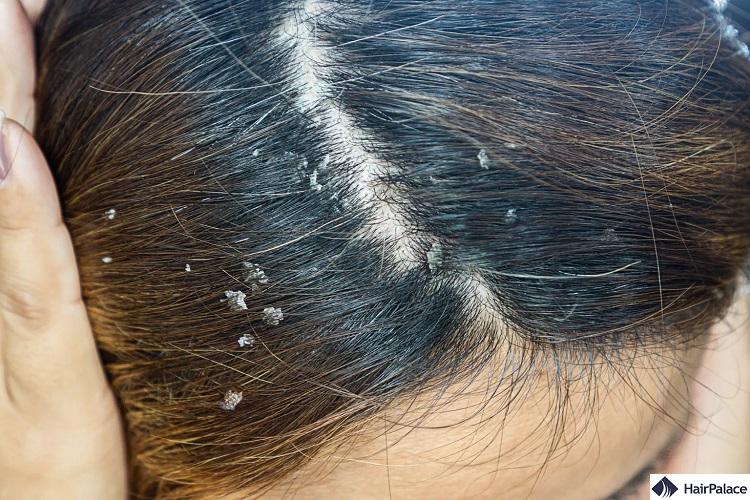
Seborrheic dermatitis is a scalp infection that leads to scaly and inflamed skin, itchiness, increased oil, persistent dandruff, and premature loss of hair. In babies, this condition is often referred to as a ‘cradle cap.’
Scientists are still working on the root causes of this infection. However, some theories predict it can result from increased levels of the yeast Malassezia, an allergy, or an autoimmune condition.
Treatment & prevention
Although there’s no direct cure for seborrheic dermatitis, there are treatments that can control and alleviate symptoms.
One of the most effective is using a mild dandruff shampoo. This can help combat flaky skin, hydrate and clean your scalp, and eliminate dirt and debris.
For babies, a gentle shampoo on the affected areas and wiping away flaky skin can help speed recovery, though often the condition resolves itself over time.
6. Scalp psoriasis
As an autoimmune condition, psoriasis causes itchy, discolored, and scaly patches of skin to develop.
Though psoriasis can affect any part of the body, it’s estimated that half the patients with this condition have some form of infection on their scalp at any time.
The danger is that scalp psoriasis may cause skin scarring, leading to extensive and permanent hair loss, especially around your hairline and back of the neck.
Treatment & prevention
There are a variety of treatments on the market that can help alleviate and prevent your scalp psoriasis from causing lasting damage.
The most popular and easy-to-use one is medicated shampoos containing salicylic acid or coal tar. These two ingredients are known to reduce skin scaling.
Other treatments which can help your condition include light therapy.
To prevent scalp psoriasis from flaring up, avoid common triggers like stress, smoking, or trauma to the skin.
7. Fungal infections: scalp yeast infection
Although yeast naturally occurs on the skin, too much can cause a yeast infection, resulting in itchiness, a rash, crusting, and poor hair condition.
While a variety of yeast can cause complications across all parts of your body, the primary source of scalp yeast infections is Candida.
Prolonged periods of warm and damp skin and restricted airflow from tight headgear can increase the levels of this yeast.
Increased stress levels, a poor diet, and exposure to certain chemicals and medications can cause yeast levels to become unbalanced, resulting in a yeast infection.
Additionally, minor cuts or trauma to your scalp can create the perfect environment for the yeast infection to develop and thrive into something incredibly serious.
Treatment & prevention
The good news is that treating and preventing scalp yeast infections is easy and straightforward. Over-the-counter topical medications like shampoos, serums, foams, and ointments are highly effective.
Be on the look out for active ingredients such as econazole, ketoconazole, terbinafine, miconazole, naftifine and oxiconzaole.
The simplest, most effective way to prevent scalp yeast infections is to practice good personal hygiene, including keeping your hair and scalp clean, dry, and with adequate airflow.
8. Lichen planus
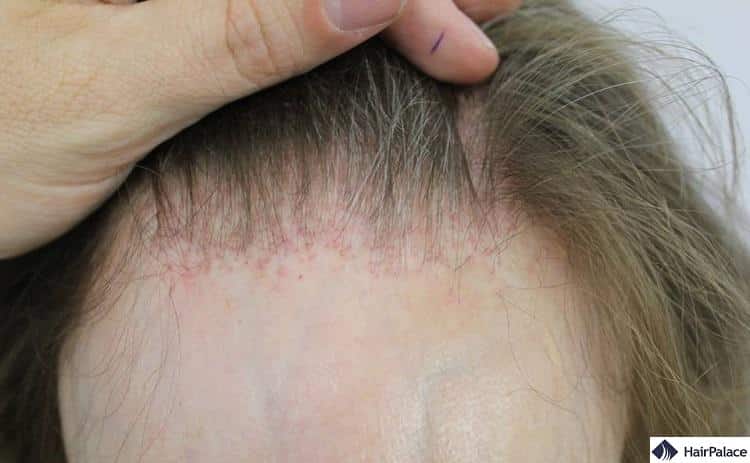
Lichen planus is a non-infectious skin condition that appears in the form of a rash. Red and purple bumps form across the skin, swell and become highly irritating.
Over time, hair may become thinner and small patches may fall out.
Scientists are still trying to figure out what exactly causes lichen planus, though some theorize that certain viruses, side effects of medications, and emotional stress are connected.
Treatment & prevention
Lichen planus can disappear on its own without any intervention. Because it can be irritating and unsightly, people may want a speedy treatment to help symptoms.
Some doctors may prescribe prescriber corticosteroid pills to reduce swelling, as well as antihistamines and retinoic acid creams to reduce swelling and improve skin elasticity.
However, you should be careful with steroid-based medication as in some cases steroids may cause hair loss.
You should also be more gentle with your scalp and avoid harsh chemical treatments and products that may further aggravate symptoms.
9. Scleroderma
Scleroderma is a chronic autoimmune condition where your body overproduces the protein collagen. But what are the first signs of scleroderma? The skin usually becomes thicker, harder, and tighter, which is followed by inflammation.
Scleroderma itchy scalp is a common symptom along with, tenderness, and swelling. Although the cause of scleroderma remains a mystery, scientists believe it is connected to a person’s immune system.
Treatment & prevention
Although scleroderma scalp infection remains a mystery, some treatments available can improve the appearance and symptoms of this condition.
Patients may also want to take pain relief in the form of anti-inflammatory medications, as well as nonsteroidal and corticosteroids.
Additionally, certain cosmetic procedures, like light therapy and skin fillers, can be effective. Use gentle skin moisturizers and lotions to improve skin elasticity and reduce tightness.
Signs and symptoms of scalp infection
Given the wide variety of scalp infections, there are understandably many symptoms when diagnosing a scalp infection.
Some people may experience one or all of the below:
- Scalp itchiness, tenderness, or mild pain
- Inflammatory reactions, including swelling and redness
- Unexpected hair falling out, including small bald patches or thinning
- A change in skin texture, including dryness or cracking
- A rash developing
- Increased dandruff
- Scales, bumps, or pimples form
It must be pointed out that certain rare disorders may show none of the above signs. If in doubt, and you suspect a potential scalp infection or are worried about an infection elsewhere on your body, you should visit your doctor for advice.
Summary
As we’ve learned, a scalp infection can not only be painful, frustrating, and embarrassing but can also lead to a significant loss of hair. In some unfortunate cases, it may become permanent.
The golden rule that you should follow is that if in doubt, consult your local GP as soon as you can. They will be able to diagnose the condition and the potential causes and prescribe the appropriate treatments.
Ultimately, your prognosis will rely on the type of infection you have, the severity and length of time you’ve been experiencing symptoms – act fast, and you should be able to make a substantial recovery.

FAQ
Yes, they can. This is because the skin, hair follicles, and overall scalp will often suffer adverse effects, including dryness, cracking, bumps and swelling.
Certain infections damage hair condition directly; scalp ringworm, for example, damages the inside of the hair shaft and can lead to strands breaking off earlier than expected.
A variety of bacteria can cause this to happen. The most common include staphylococcus bacteria, which, when left unchecked, can lead to conditions such as folliculitis decalvans (alopecia which leaves scars).
There are two main ways of treating a fungal infection. Firstly, though not an appealing choice for many, you can shave or cut the affected areas of your hair.
Secondly, you can use an antifungal treatment, including medicated shampoo and ointment. Check for active ingredients like terbinafine and ketoconazole, which have antifungal properties that are highly effective against most scalp yeast infections.
As well as following the advice and recommendations of your doctor, it would help if you practiced good personal hygiene to keep your scalp and hair in pristine condition.
This includes washing your hair regularly, removing dirt, oil, dust, and debris, and using antibiotic shampoos to promote resilience. Remember to clean your haircare accessories regularly, including combs, hairbrushes, hats, helmets, and hairclips.
Ensure the infection is completely treated with prescribed antifungal medication. Adopt a gentle hair care routine and incorporate a healthy diet with adequate proteins, vitamins, and minerals. Choose hairstyles that don’t pull or stress the hair follicles, and remember to stay hydrated to maintain overall hair health.
Factors like sweating, not drying hair thoroughly after washing, sharing personal items like hats or combs, and having minor skin or scalp injuries can increase the risk of developing such an infection. It’s also more common in children and those with weakened immune systems. Regular hygiene and avoiding shared personal items can help prevent it.
Last medically reviewed on April 23rd, 2024
- Impetigo. (n.d.)https://www.aad.org/public/diseases/contagious-skin-diseases/impetigo
- Lichen planus. (n.d.)https://www.aad.org/public/diseases/rashes/lichen-planus
- Mucormycosis. (2015, December 30)https://www.cdc.gov/fungal/diseases/mucormycosis/definition.html
- Ringworm. (2018, August 6)https://www.cdc.gov/fungal/diseases/ringworm/index.html
- Scleroderma. (n.d.)https://www.aad.org/public/diseases/painful-skin-joints/scleroderma
- Seborrheic dermatitis. (n.d.)https://www.aad.org/public/diseases/scaly-skin/seborrheic-dermatitis
- Durdu M, Ilkit M. First step in the differential diagnosis of folliculitis: cytology. Crit Rev Microbiol. 2013 Feb;39(1):9-25. doi:10.3109/1040841X.2012.682051
- Spampinato C, Leonardi D. Candida infections, causes, targets, and resistance mechanisms: traditional and alternative antifungal agents. BioMed Research International. 2013;2013:1-13. doi:10.1155/2013/204237

